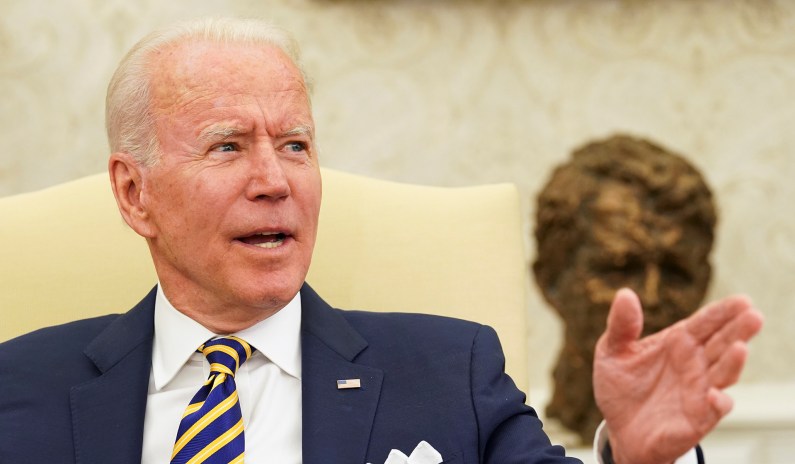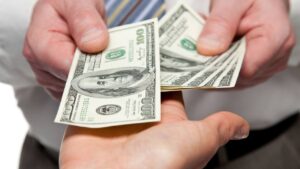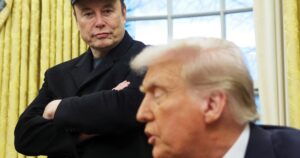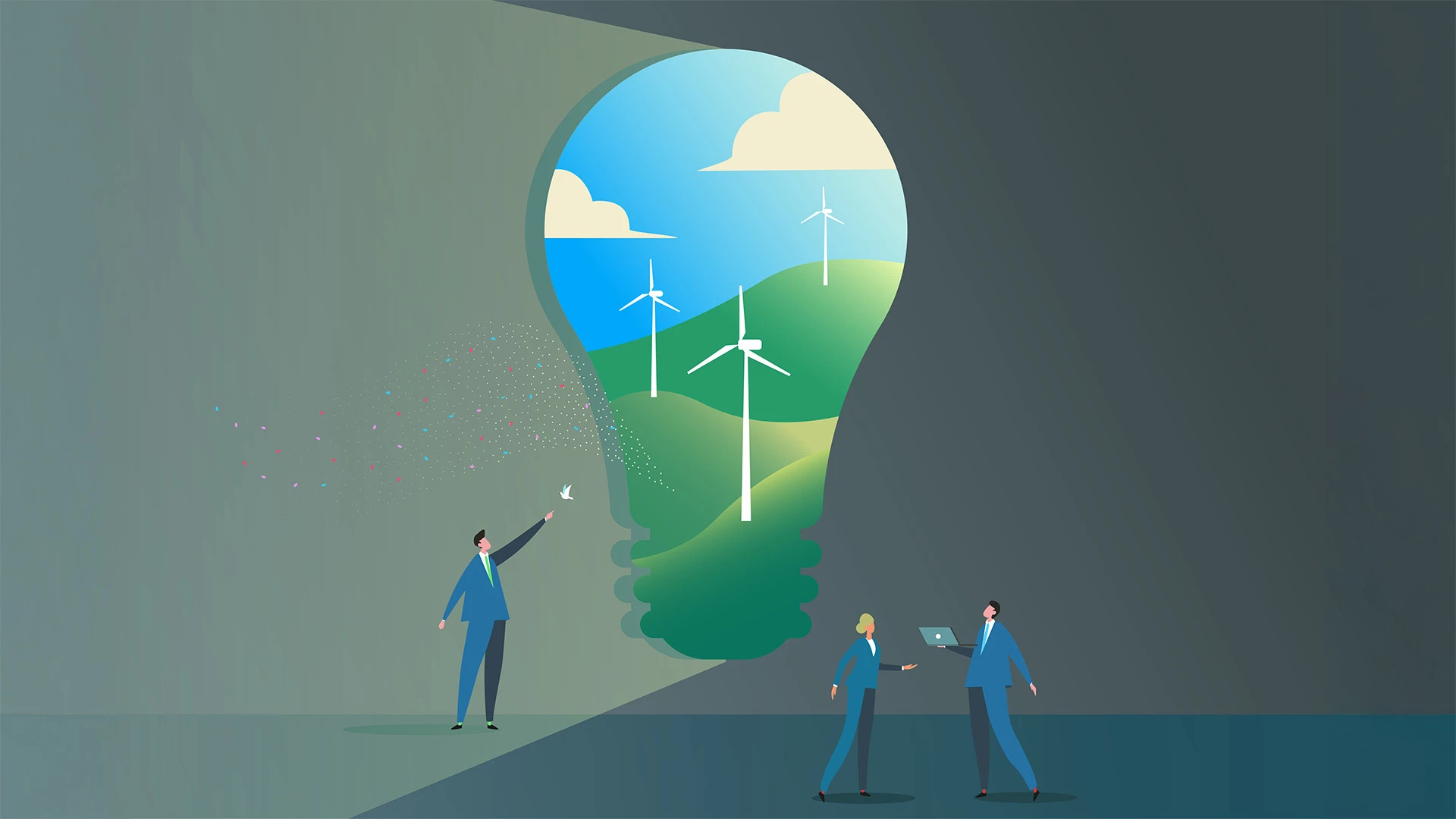https://www.nationalreview.com/2021/07/when-cheap-money-wont-be-what-then/

Welcome to the Capital Note, a newsletter about business, finance, and economics. On the menu today: the dangerous illusion of cheap money, cutting dividends is not the answer, home prices and inflation, warning signs from the Skew index, and fungi play the markets.
News and Views
TANSTAAFL and Ultra-Low Interest Rates
Ultra-low interest rates are an invitation to malinvestment, irresponsibility, and delusion (not mutually exclusive failings), especially when those rates are, even if only in part, the work of non-market actors.
Quite a bit of the borrowing that is under way at the moment (and has been for a while) is going to end in disappointment and tears. Eventually it will also lead to a major crisis in the government’s finances.
Brian Riedl, writing in the Washington Post:
The election of Joe Biden to the presidency has prompted liberal calls to set aside pesky budget deficit concerns and go deeper into debt to finance large new spending initiatives — well beyond short-term stimulus. Influential left-of-center experts such as the Harvard economists Lawrence Summers and Jason Furman, journalist Matt Yglesias, and Biden adviser (and former PostEverything columnist) Jared Bernstein assert that today’s low interest rates make government borrowing too good of a bargain to pass up.
The arguments these commentators make differ in their details: Yglesias proposes a lavish “ice cream party” with something for everyone: tax cuts for Republicans and enough spending to make Biden’s presidency “FDR-sized.” Summers and Furman more modestly propose abandoning the ideal of a balanced budget during good economic times while keeping debt-servicing payments at levels they believe are manageable. But they still propose $5 trillion in additional deficit-financed investments (only half of which would be related to the current crisis) over the next decade. All these writers share the view that the persistence of low interest rates — currently about 1 percent for a 10-year Treasury bill — means the rules of the fiscal game have fundamentally changed.
Riedl accepts (rightly) that “the current recession is the wrong time to worry about budget deficits,” but he is also right to highlight how “these bloated debt levels will mean that any future rise in interest rates could bring a full-scale debt crisis.”
My only quibble: “could” should read “will.”
On some estimates, interest rates during this crisis have been at historically low levels, and, by “historical,” I mean millennia. Even a relatively mild twitch toward the mean could mean trouble.
Riedl (my emphasis in bold):
Deficit doves are essentially gambling the future of the U.S. economy on the expectation that interest rates never again exceed 4 percent or 5 percent. While they are correct that, contrary to expectations, interest rates have in recent years declined even as public debt has grown, they are wrong to assume that state of affairs will continue.
Let’s examine the rising debt trajectory. The Congressional Budget Office projects that Washington will borrow $104 trillion over the next three decades if left on autopilot — that is, in a scenario that assumes no new bailouts or spending expansions, and that also assumes the tax cuts passed in 2017 expire on schedule over the next several years. This new debt is almost entirely driven by annual Social Security and Medicare shortfalls, caused by obligations to 74 million aging baby boomers, that will rise to nearly 7 percent of the gross domestic product by 2050.
This much debt will make interest rates vitally important. While the average interest rate Washington pays on its debt has gradually fallen from 8.4 percent to 2 percent over the past three decades, the CBO assumes that rates will gradually rise to 4.4 percent over the next 30 years.
Altogether, the CBO projects that the national debt — which has already more than doubled, to 100 percent of GDP, since the Great Recession — will approach 200 percent of GDP within three decades and continue to rise steeply thereafter. By 2050, interest payments will consume nearly half of all tax revenue and push annual budget deficits to 12.6 percent of GDP — the equivalent of $2.5 trillion today. The CBO assumes this large debt will eventually slow the economy and reduce family incomes.
And that is the rosy scenario of peace, prosperity, no new government initiatives and modest (if steadily increasing) interest rates. But what happens if interest rates exceed the projections by even one percentage point?
Should that occur, over 30 years $30 trillion in interest costs would be added to the debt, pushing it to 264 percent of the economy’s value, a ratio that is unprecedented in modern economies. And the rate of debt accumulation would be accelerating. By the time today’s babies are in the workforce, two thirds of their federal taxes would simply pay the interest on the national debt.
Riedl mentions that one way to reduce the risk “would be for Washington to lock in today’s low rates by issuing more 30-year bonds.” He’s not wrong, and Janet Yellen, for one, has raised the possibility.
From Pensions & Investments in January:
All it took was a non-committal comment from Janet Yellen to persuade Treasury traders there’s a chance the U.S. will finally expand maturities in the world’s biggest bond market beyond 30 years.
The Treasury Department has pondered ultralong bonds for years, but they’ve never been introduced in part because of resistance from Wall Street. But Ms. Yellen, President-elect Joe Biden’s pick for Treasury secretary, got people buzzing about them again by discussing the topic Tuesday during her Senate confirmation hearing. Markets responded, with traders selling 30-year bonds.
“There is an advantage to funding the debt, especially when interest rates are very low, by issuing long-term debt, and I would be very pleased to look at this issue and examine what the market would be like for bonds of this maturity,” Ms. Yellen said when asked about longer-term debt, including 50-year Treasuries.
From the same story:
Just this month, former Treasury Secretary Robert Rubin cautioned against taking rock-bottom interest rates for granted and said the government should take advantage of the moment by substantially increasing the maturity of its debt, including possibly issuing ultralong bonds.
Such long-dated Treasuries would probably find takers. After all (via CNBC, from June 2017):
Argentina sold $2.75 billion of a hotly demanded 100-year bond in U.S. dollars on Monday, just over a year after emerging from its latest default, according to the government.
The South American country received $9.75 billion in orders for the bond, as investors eyed a yield of 7.9 percent in an otherwise low yielding fixed income market where pension funds need to lock in long-term returns.
Although, if it’s not impolite to mention this (from the Wall Street Journal in August):
In the restructuring agreement, the [Argentinian] 100-year bond’s maturity will shorten substantially, along with its value. Holders will end up with bonds maturing in 15 and 26 years and can expect to recover something broadly in line with the recovery value of the restructuring, on the order of 54.5 cents on the dollar.
The U.S. is not (yet) Argentina, but, speaking purely for myself (admittedly someone with no technical reason to hold long-dated dated bonds), even the yield on Uncle Sam’s ten-year bonds (roughly 1.47 percent) looks . . . unappetizing.
Nevertheless, if the U.S. can borrow long, and in size, it should. That is not what it is doing.
Riedl:
Washington is behaving like a subprime homeowner and making long-term debt commitments based on short-term interest rates. The average maturity of the U.S. debt is five years and sharply declining, which means most of the national debt would quickly roll over into any future interest rate increase.
Whether the U.S. could lengthen the maturity of its debt on a scale large enough to eliminate the longer-term problem heading its way is, to put it mildly, doubtful, but its failure to take any steps in that direction is another sign of a complacency that beggars belief and may end up beggaring us all.
Riedl:
There is simply no guarantee that interest rates won’t rise. The reasons that interest rates have not gone up as debt has risen remain much debated. But they include declining productivity and lower inflation growth, a global demand for safe assets (inspiring investment in bonds over stocks) and — relatedly — baby boomers saving more as retirement nears. In a recent post, former Obama Treasury adviser Ernie Tedeschi confirms that — all else equal — the coming 100 percent of GDP rise in the debt would ordinarily raise interest rates by approximately four percentage points. But he argues that (so far) pressure on interest rates has been offset by higher saving and the like.
But for interest rates to remain low, those offsetting factors would have to not only continue, but accelerate enough to offset all the upward rate pressure from this new debt. This seems unlikely, as productivity is unlikely to fall further, retired boomers will draw down those savings, and investors may eventually seek out higher returns than government bonds. In that context, assuming the average interest rate gradually nudges upward from 2 percent to 4.4 percent is far from outlandish.
All in all, it seems reckless for debt advocates to dismiss the possibility of interest rates returning to 4, 5 or 6 percent in the medium to long term. The past half-century has not been kind either to economic forecasters or to the pronouncements of overconfident technocratic economic managers. Just 15 years ago Wall Street’s mathematical models failed to anticipate how mortgage-backed securities and the housing market could crash. Advocates for long-term deficit spending say the low rates on 30-year bonds show that markets aren’t worried about the debt, but markets rarely predict future economic and budget crises.
Reality check: No one knows for sure what interest rates will be in five, 10 or 20 years. Yet an economic recovery and $104 trillion in new debt are likely to push rates above today’s low levels. Deficit doves would gamble America’s economic future on the hope that interest rates will never again top 4 or 5 percent. Are you feeling lucky?
Around the Web
I’ll admit to being a fan of dividends (not so much of share buybacks, although I would not prohibit them), so this, by the Daily Telegraph’s Matthew Lynn, was preaching to the choir (my emphasis added):
Cutting dividends is a terrible way to restore a company to health. From BP to Tesco, to Marks & Spencer, it has been tried lots of times. The results? Invariably disappointing. In truth, if the management team knew how to invest money well it wouldn’t have to cut the dividend in the first place. Shareholders should simply take the cash and invest it elsewhere. Or else they should change the management. But there is no point in a flailing management simply being allowed to cut payouts to shareholders to buy some more time. That is the worst of all possible worlds.
House prices and inflation:
In the course of an earlier Capital Note, I quoted this from the Financial Times:
Tuesday’s home price numbers would also influence broader inflation data, said James Knightley, chief international economist at ING. Primary rent paid by tenants, as well as owners’ equivalent rent — how much owners assess they would charge if they were to rent out their homes — accounted for a third of the basket of goods used to calculate the consumer price index, he said.
“Assuming the relationship holds we should expect the housing components to swing significantly higher in the months ahead,” he said.
I added:
While what’s happening to housing prices is, in part, a manifestation of the asset-price inflation caused by ultra-low interest rates, its effect both on wider inflation and (this matters because of the way that inflation feeds upon itself) longer-term expectations of inflation should not be underestimated.
Over at Bloomberg, John Authers goes into more detail on the effect that the current surge in house prices might (through its impact on rents/imputed rents) have on the broader consumer price index. He cites “a rather sobering paper” by Fannie Mae suggesting “that the CPI components for rents tend to follow the Case-Shiller price index with a delay of about five quarters.”
And quotes this from that paper:
-
Due to how shelter costs are measured, the housing components of the indices decelerated considerably over the past year, despite strong home price appreciation. This has kept topline inflation from being even higher.
-
Lagged effects from the past year’s house price appreciation and more recent rent recovery could begin to flow into inflation measures as soon as the May readings. House price gains to date suggest an eventual acceleration in shelter inflation from the current rate of 2.0 percent annualized to about 4.5 percent. If house price growth continues at the current pace, shelter inflation would likely move even higher.
-
Timing lags suggest increasing shelter inflation will last through at least 2022, meaning “transitory” increases to the rate of overall inflation may be more prolonged than many are expecting. Due to the heavy weight given to shelter, housing could contribute more than 2 percentage points to core CPI inflation by the end of 2022 and about 1 percentage point to the core PCE. Both would be the strongest contributions since 1990.
“Transitory” inflation, you say?
Watching the Skew index:
Mounting investor nerves over the strength of the US stock market rally has sparked a dash to buy insurance against spikes of turbulence, lifting a popular financial fear gauge to a record high.
The S&P 500 index of blue-chip US equities has climbed more than 16 per cent in 2021, extending its gains since last year’s coronavirus nadir to 92 per cent and solidifying the bull market recovery as one of the strongest on record.
However, given lofty valuations and the shake-ups that can erupt over the thinly traded summer months, some investors are now buying insurance against sharp stock market declines.
As a result, the Skew index — which measures the difference between the cost of derivatives that protect against big market drops on one side, and the right to benefit from a rally on the other — has hit record heights.
The Skew gauge rises when fear outpaces greed, so the widening divergence indicates how worries are bubbling up beneath the seemingly placid surface of the stock market . . .
Random Walk
Fungi play the markets:
When you think about trade and market relationships, you might think about brokers yelling at each other on the floor of a stock exchange on Wall Street. But it seems one of the basic functions of a free market is quietly practiced by fungi.
New research from a Rice University economist suggests certain networks of fungi embrace an important economic theory as they engage in trading nutrients for carbon with their host plants. This finding could aid the understanding of carbon storage in soils, an important tool in mitigating climate change.
A research paper entitled “Walrasian equilibrium behavior in nature” is available online and will appear in an upcoming edition of Proceedings of the National Academy of Sciences. Ted Loch-Temzelides, a professor of economics and the George and Cynthia Mitchell Chair in Sustainable Development at Rice, examined through an economic lens data from ecological experiments on arbuscular mycorrhizal fungi networks, which connect to plants and facilitate the trading of nutrients for carbon.
Loch-Temzelides found that these relationships resemble how economists think about competitive—also known as Walrasian—markets. The paper demonstrates that Walrasian equilibrium, a leading concept in the economic theory of markets used to make predictions, can also be used to understand trade in this “biological market.”
“Far from being self-sacrificing, organisms such as fungi can exhibit competitive behavior similar to that in markets involving sophisticated human participants,” Loch-Temzelides said.
His finding also implies that resources are allocated to the maximum benefit of the market participants—in this case, fungi and plants . . .
— A.S.
To sign up for the Capital Note, follow this link.


















